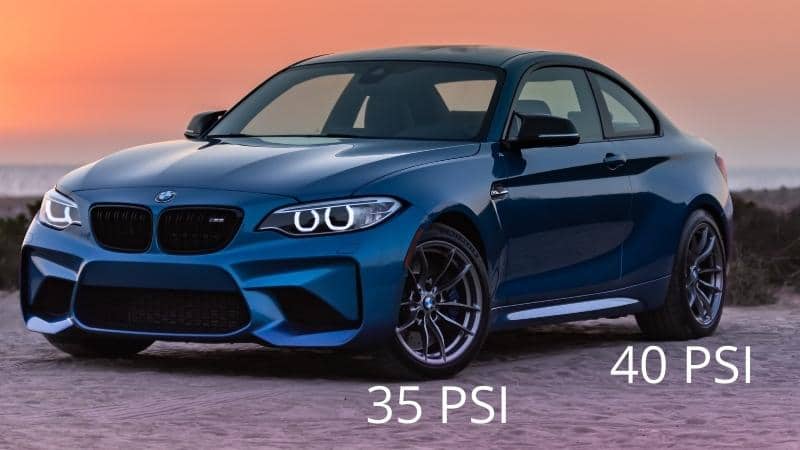Vehicle performance is influenced in many ways by tire pressure: from steering control, cornering, handling to the general driving experience.
Car manufacturers understand the importance of proper tire pressure. Hence, they recommend pre-determined PSI for car tires, including a Tire Pressure Monitor System (TPMS) to keep drivers in check of their tire’s air pressure.
BMW is one such manufacturer to have spelled out instructions for tire pressures. Although unconventional, the automobile giant recommends a higher pressure in rear tires compared to other manufacturers.
But, why is this?
BMW recommend higher rear tire pressure to reduce oversteer. Oversteer occurs when a car wheel is turned, but the car steers more than intended, increasing the car’s angle as the rear tires skid out. With higher pressure in rear tires, traction is shifted from the front tires to the rear, allowing better overall grip and control of the BMW vehicle.
This article explains why BMW recommends higher tire pressures for the rear tires and provides tips to maintain proper pressure.
Why Should I Have Higher Rear Tire Pressure in my BMW?
BMW’s recommended tire pressures are quite different compared to other manufacturers, allowing higher tire pressures for rear tires.
The reason BMW does this is because higher pressure in the rear tires is an intentional attempt to increase understeer in their cars. Understeer occurs when a car wheel is turned sharply, but the car continues in a straight line. The feedback is negative. It is easily controlled by reducing the speed or steering effort.
Conversely, oversteer occurs when a car wheel is turned, but the car steers more than intended, increasing the car’s angle as the rear tires skid out. This could result in fishtailing and spinouts if not corrected quickly.
Here’s a fun video explaining the difference between oversteering and understeering perfectly:
Most BMW models are rear-wheel driven; therefore, the rear tires supply more traction during acceleration. As such, more emphasis is on improved handling during oversteering and understeering, rather than concerns on blowouts and braking.
Moreover, oversteering poses a problem for high-performance cars like BMW. When accelerating quickly during a turn, for example, a left turn, the left rear tire spins, causing it to burn and increasing the load on the right rear tire. Hence, lateral traction is negatively affected on both rear tires.
As the car spins counterclockwise, it causes both rear wheels to travel in a straight line. It gets worse if the brakes are applied, as the front will gain more traction.
With higher pressure in rear tires, traction is shifted from the front tires to the rear, allowing better overall grip and control for the BMW vehicle.
Maintaining Proper Air Pressure in a BMW
The recommended tire pressure is between 32 – 40 PSI for most BMW models. Nevertheless, there is no reason to guess, as every car has a guide for the recommended tire pressure in their owner’s manual or on a sticker on the driver’s door jamb. So ensure to confirm the appropriate readings for tire pressure as recommended by the manufacturer.
It is essential to check your tire pressure frequently and keep them at recommended pressure levels. In maintaining proper air pressure, BMW models are made with a built-in TPMS (Tire Pressure Monitor System), which indicates a light on the dashboard when tire pressure is low.
However, if you are in a situation where you have been alerted by your TPMS, here are a few tips to help you maintain your tire’s air pressure:
- Park your BMW and check the tire pressure only when the tires are cold to get accurate readings. You can employ a manual or digital pressure gauge to get these readings.
- Compare the tire pressure readings against the recommended tire pressure values in the owner’s manual.
- If the readings are lower than the recommended PSI, simply note the value and fill up your tires using a car tire pump or drive to the nearest gas station to have it filled.
Hi, my name is Niklas, the head content creator & CEO of Whirling Wheelz. I am very interested in vehicles of all kinds, mainly cars. I have a car mechanics degree from high school and a big hobby of mine is to follow the WRC (World Rally Championship) both online and through travel.


